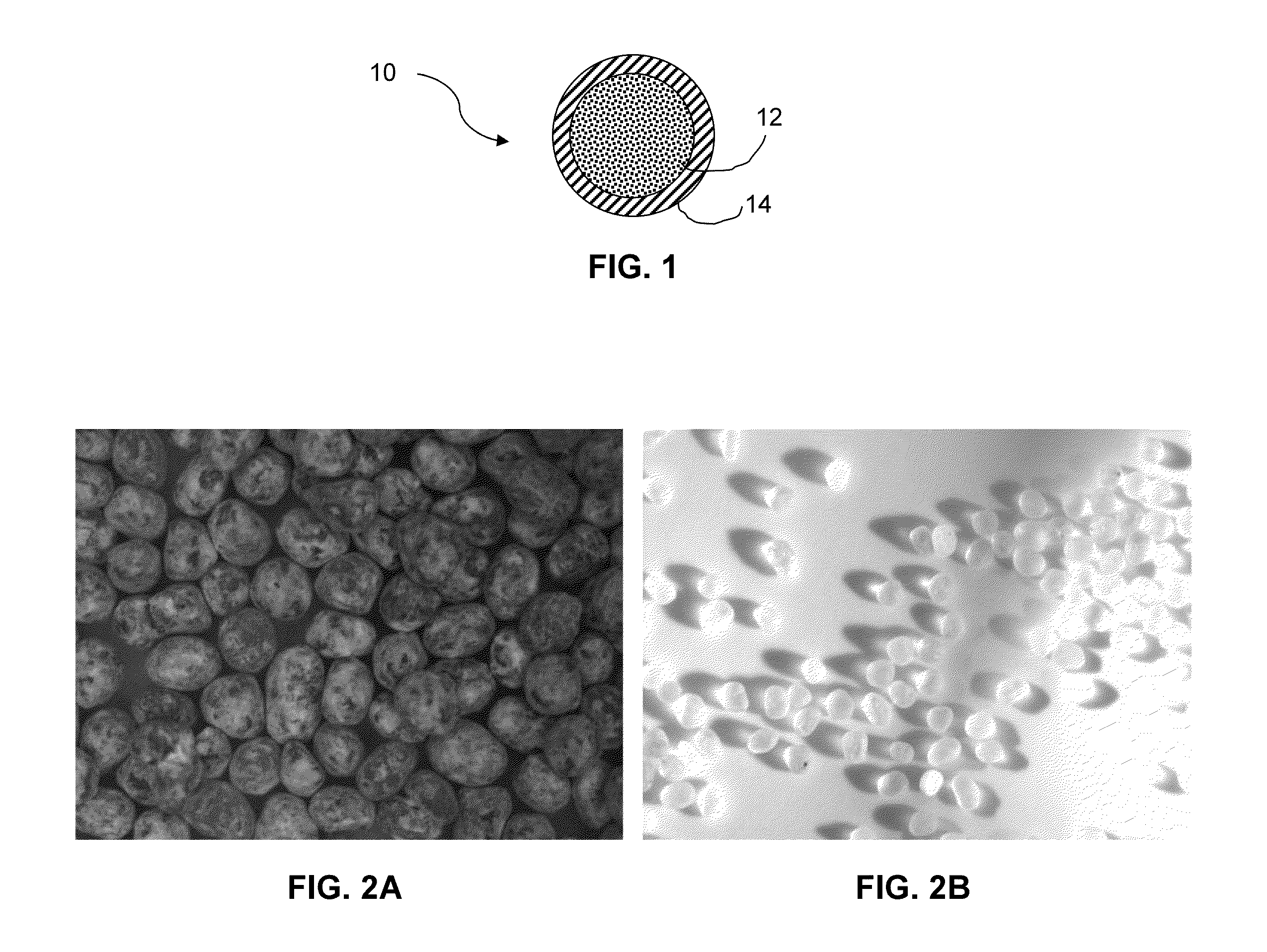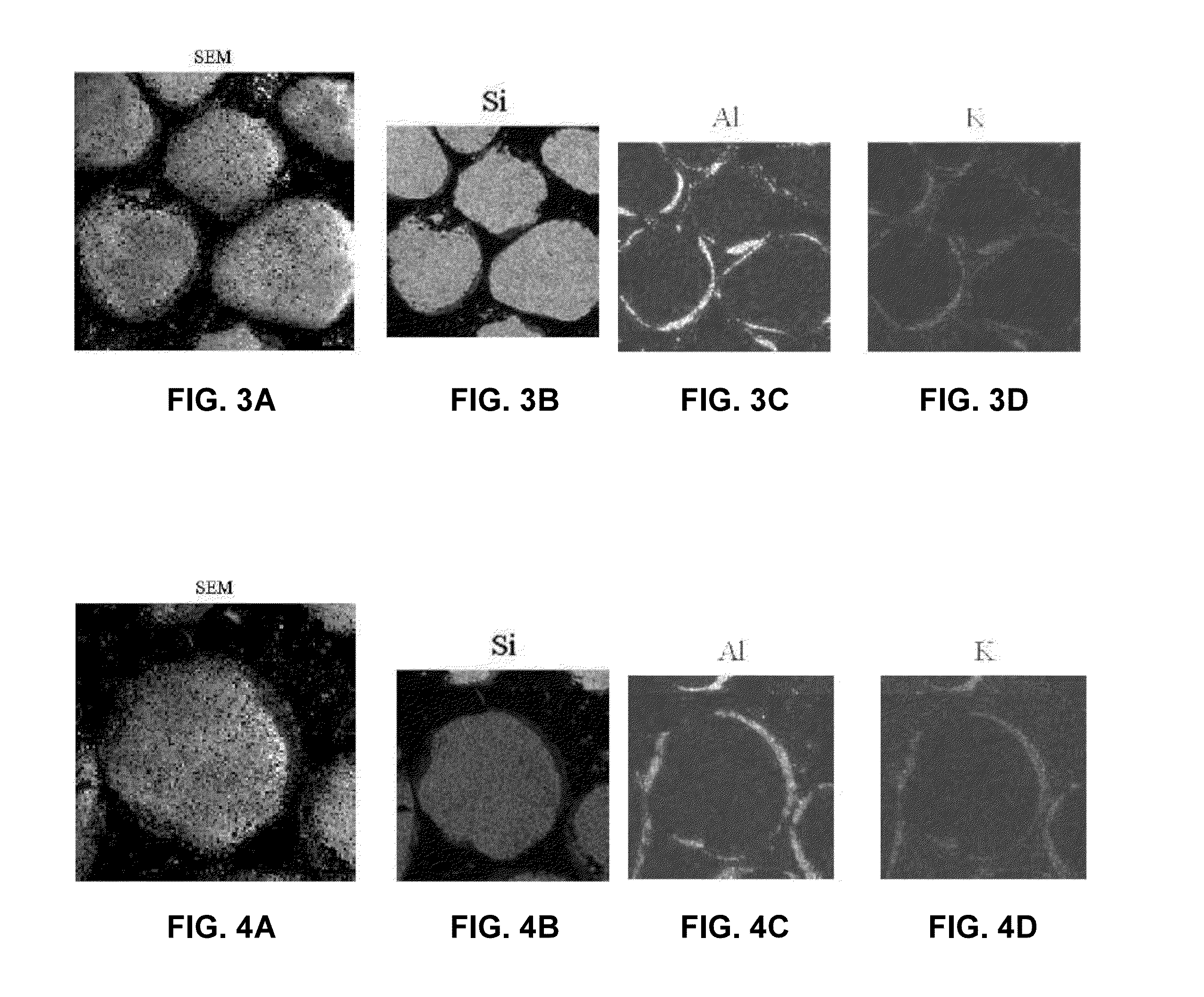Proppants with improved strength
a technology of proppants and strength, applied in the field of proppants, can solve the problems of reservoir “fines”, undesirable fine production, and associated reduction of fracture conductivity
- Summary
- Abstract
- Description
- Claims
- Application Information
AI Technical Summary
Benefits of technology
Problems solved by technology
Method used
Image
Examples
Embodiment Construction
[0021]It has been discovered that alkali activated aluminosilicate and other materials may be used as coatings in order to improve the strength of proppants, including, but not necessarily limited to, brown and white sand. The resulting coated proppant material show a dramatic improvement in the strength of both the white and brown sand. In both cases, the fines flowback obtained at a 10,000 psi (69 MPa) closure stress using the API standards are lower than about 10 wt %.
[0022]More specifically, a method and composition is described to coat proppant sand to dramatically increase its strength thereby extending its usage to formation closing stresses to at least about 5000 (34 MPa), alternatively at least to about 10,000 (69 MPa) and in another non-limiting embodiment to about 12,000 psi (83 MPa). By “withstanding” closure stresses in this range is meant that the coated proppant will not be crushed or disintegrated at these closure stresses.
[0023]The coated proppant is slightly lighte...
PUM
| Property | Measurement | Unit |
|---|---|---|
| apparent density | aaaaa | aaaaa |
| apparent density | aaaaa | aaaaa |
| mole ratio | aaaaa | aaaaa |
Abstract
Description
Claims
Application Information
 Login to View More
Login to View More - R&D
- Intellectual Property
- Life Sciences
- Materials
- Tech Scout
- Unparalleled Data Quality
- Higher Quality Content
- 60% Fewer Hallucinations
Browse by: Latest US Patents, China's latest patents, Technical Efficacy Thesaurus, Application Domain, Technology Topic, Popular Technical Reports.
© 2025 PatSnap. All rights reserved.Legal|Privacy policy|Modern Slavery Act Transparency Statement|Sitemap|About US| Contact US: help@patsnap.com



